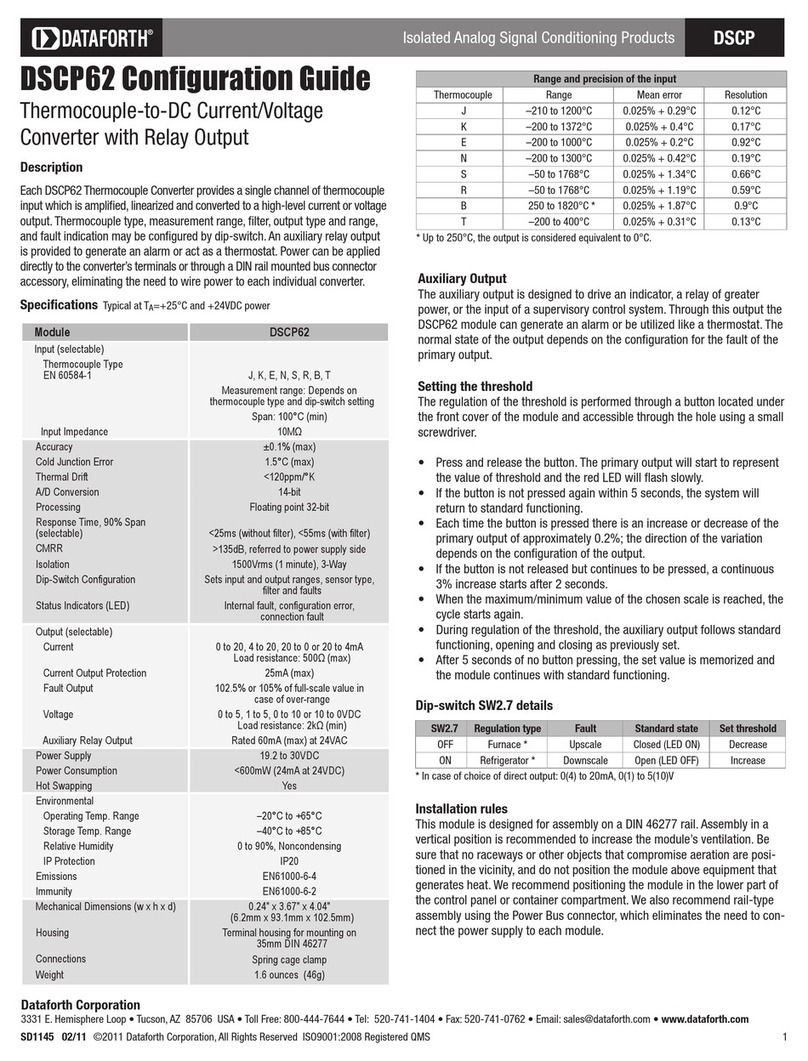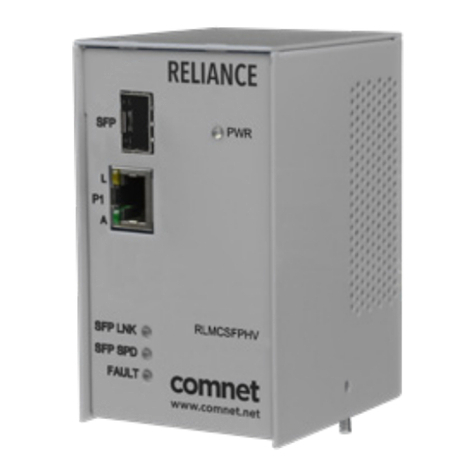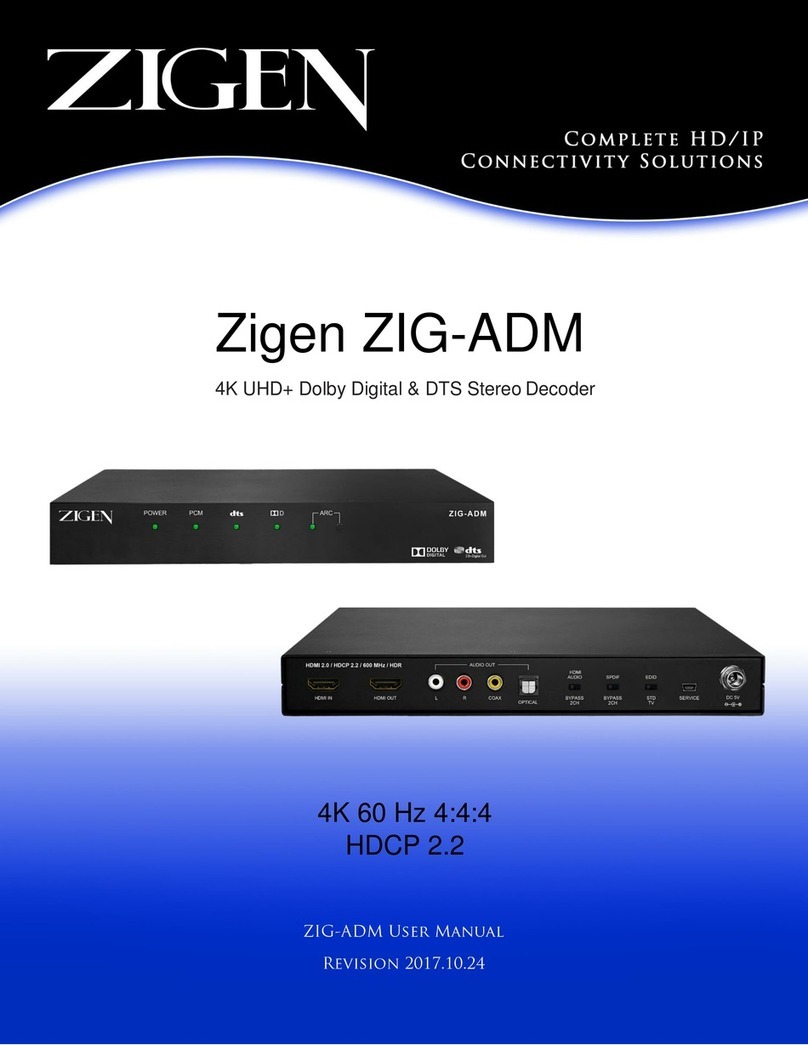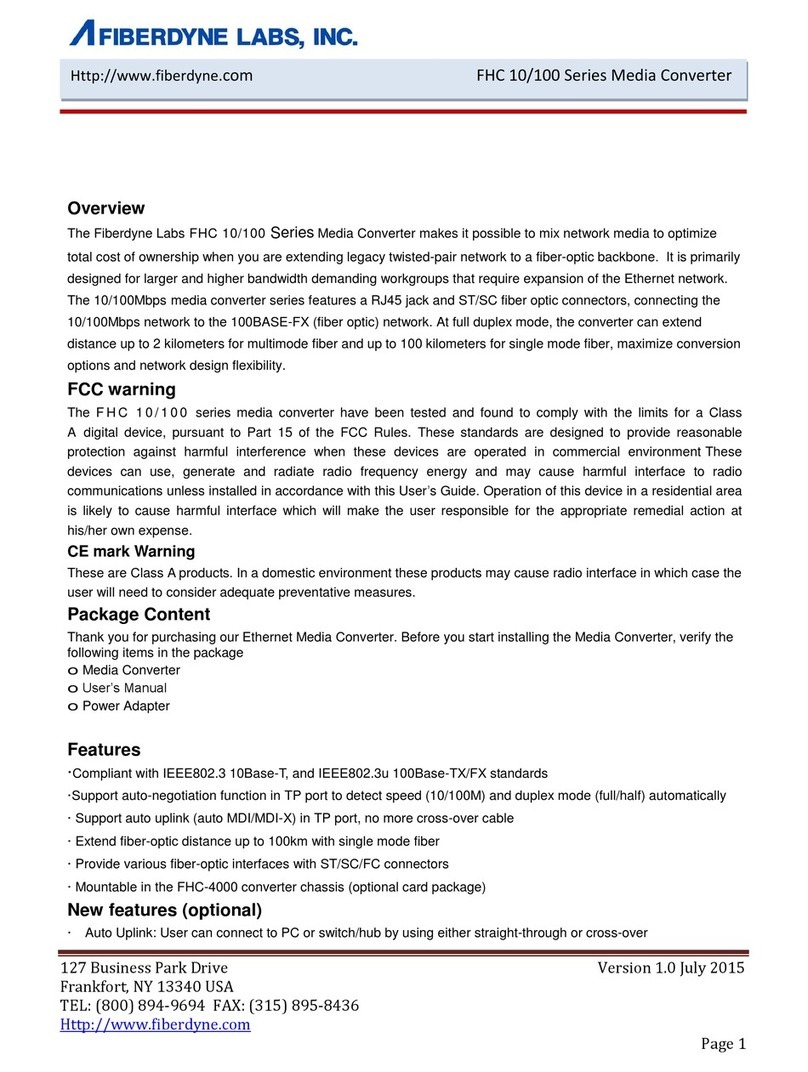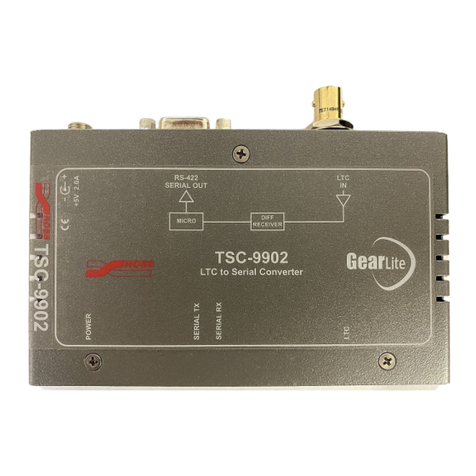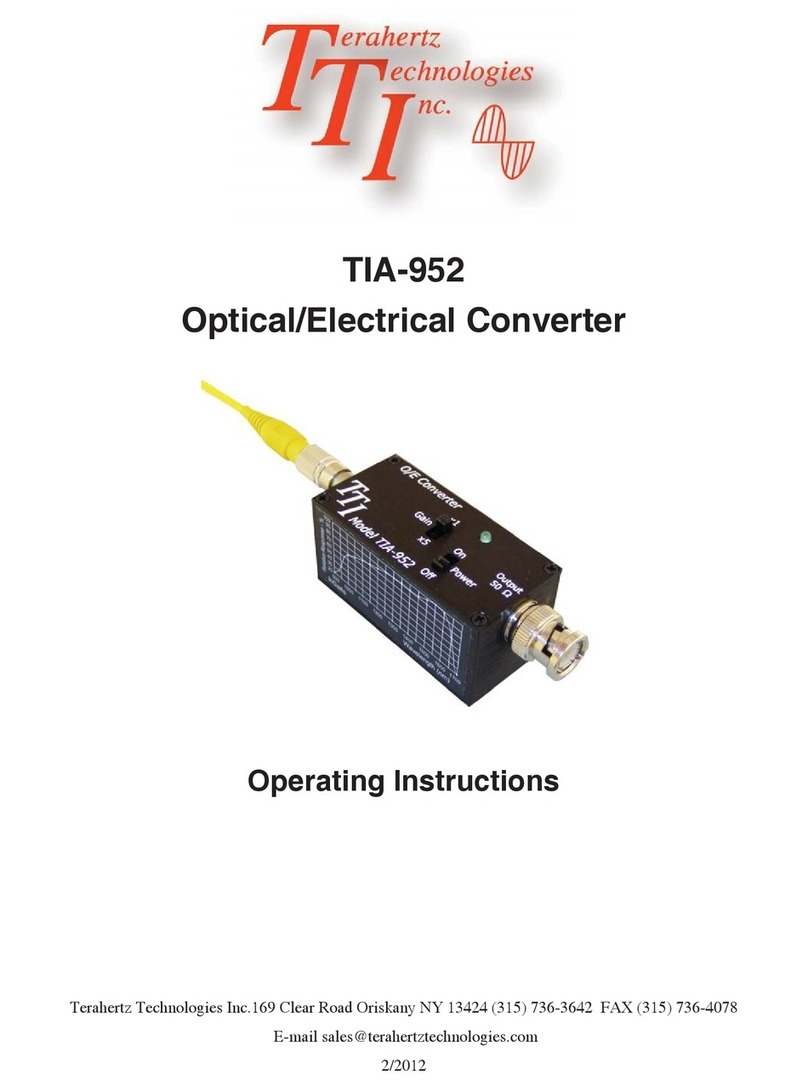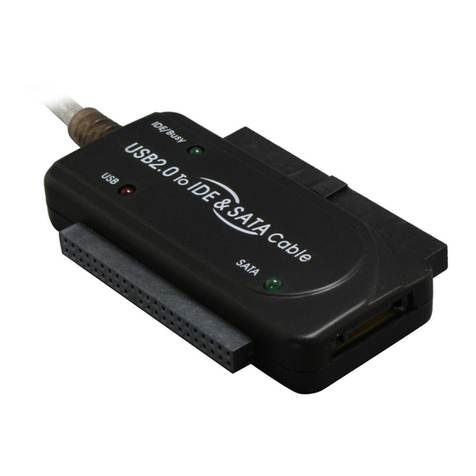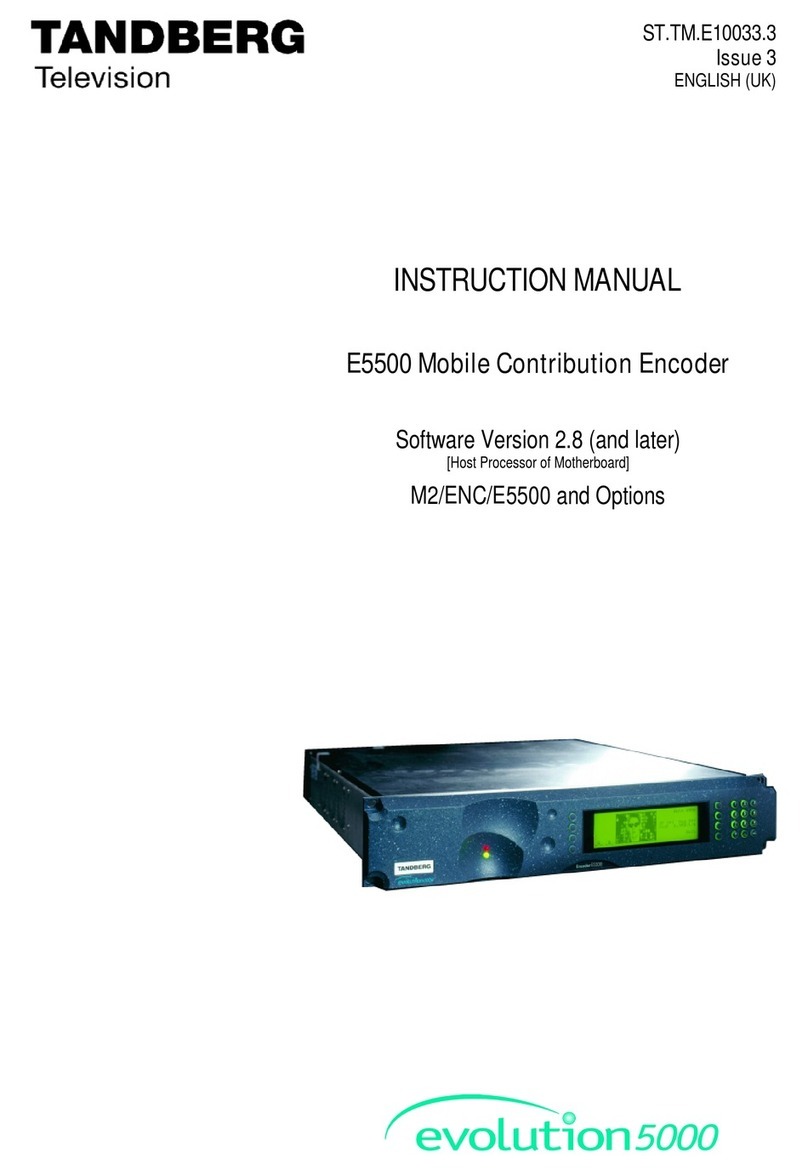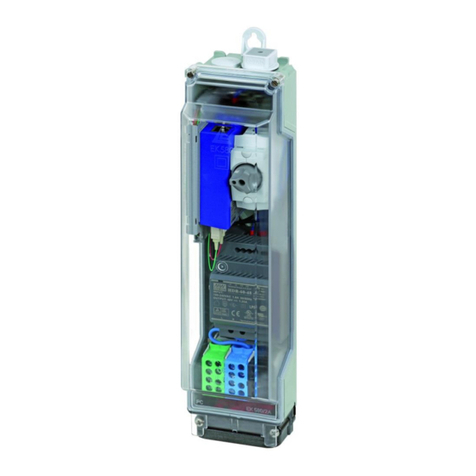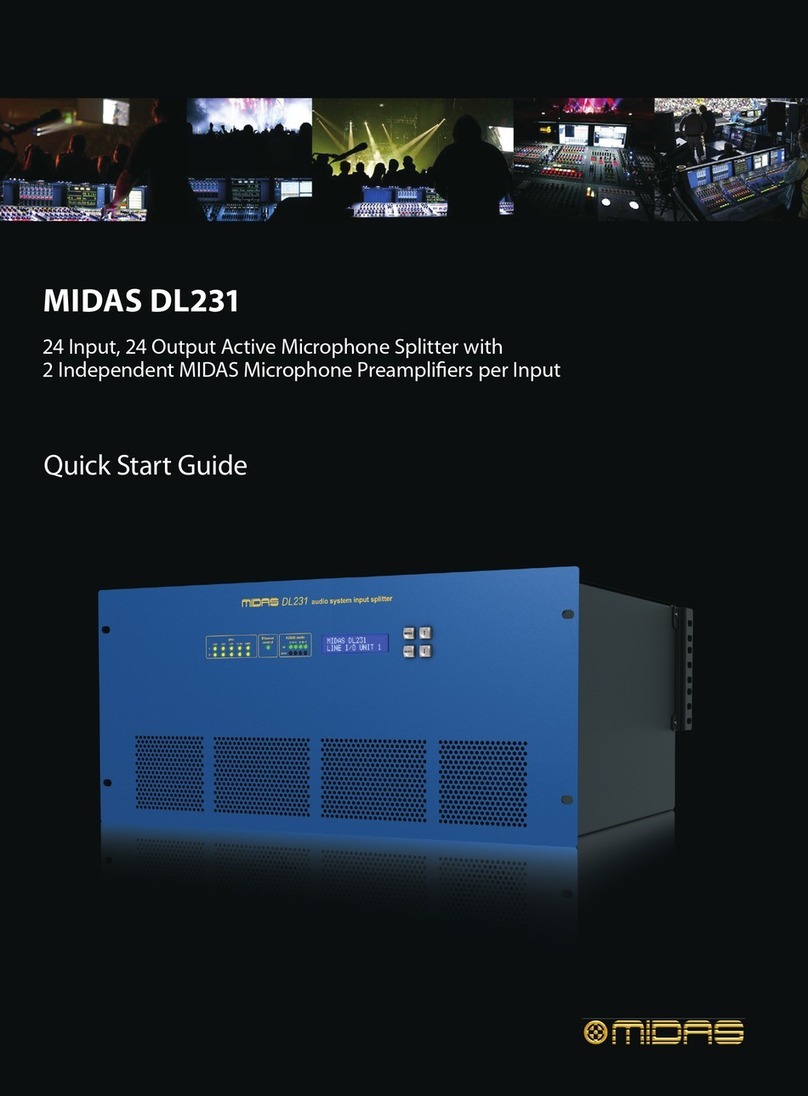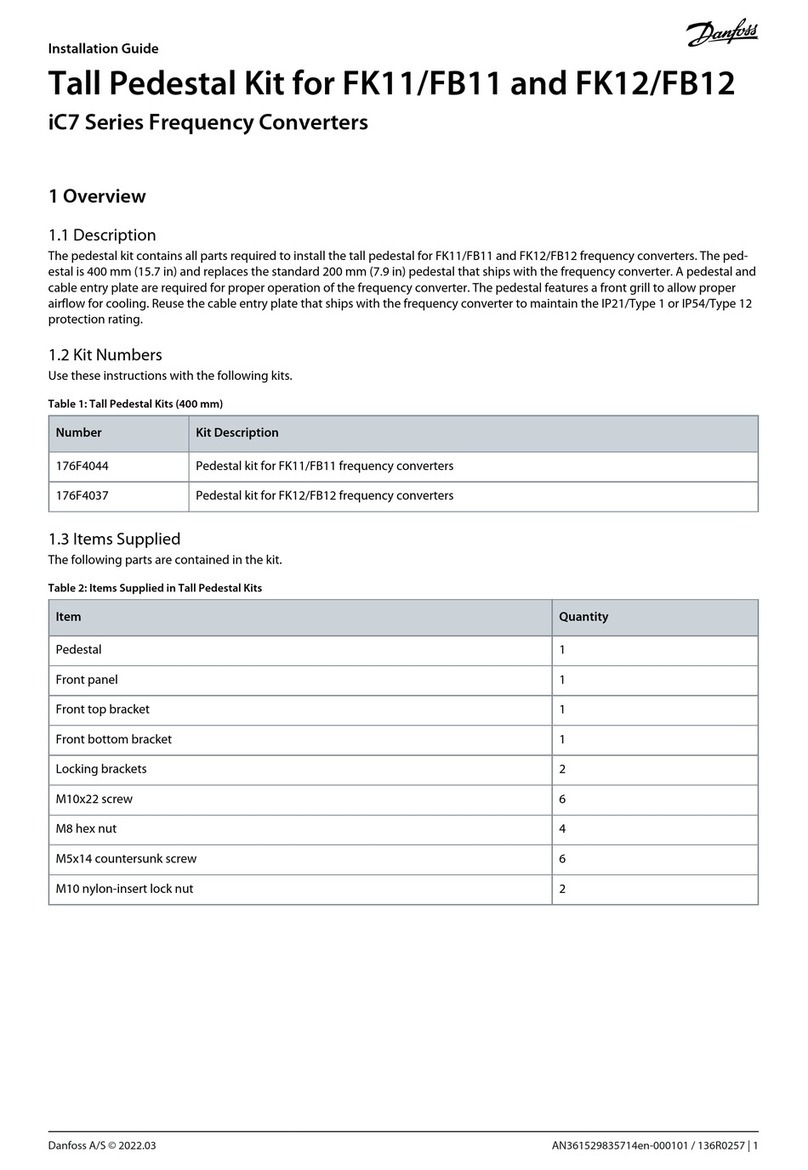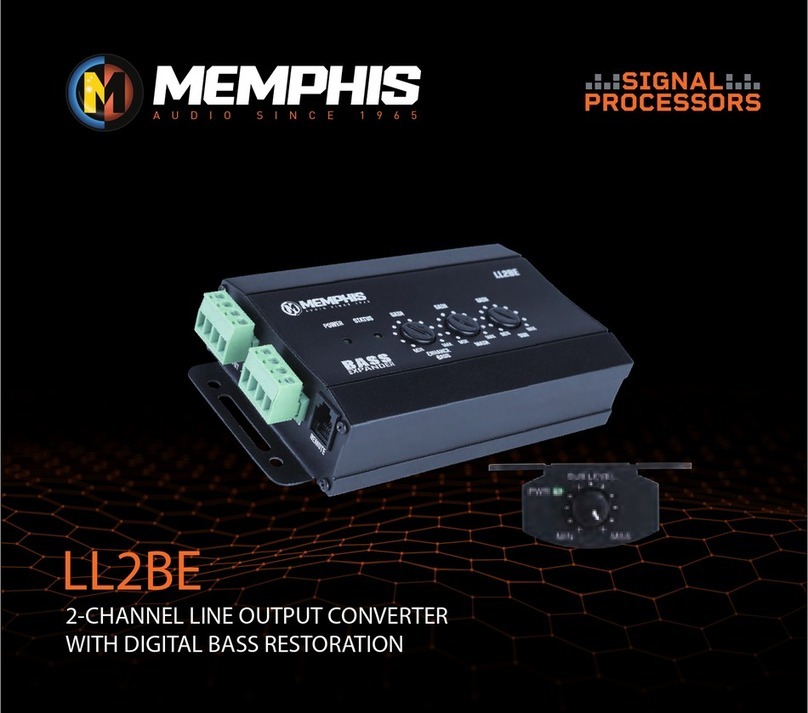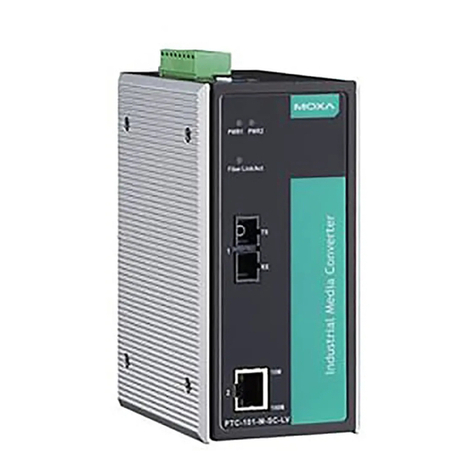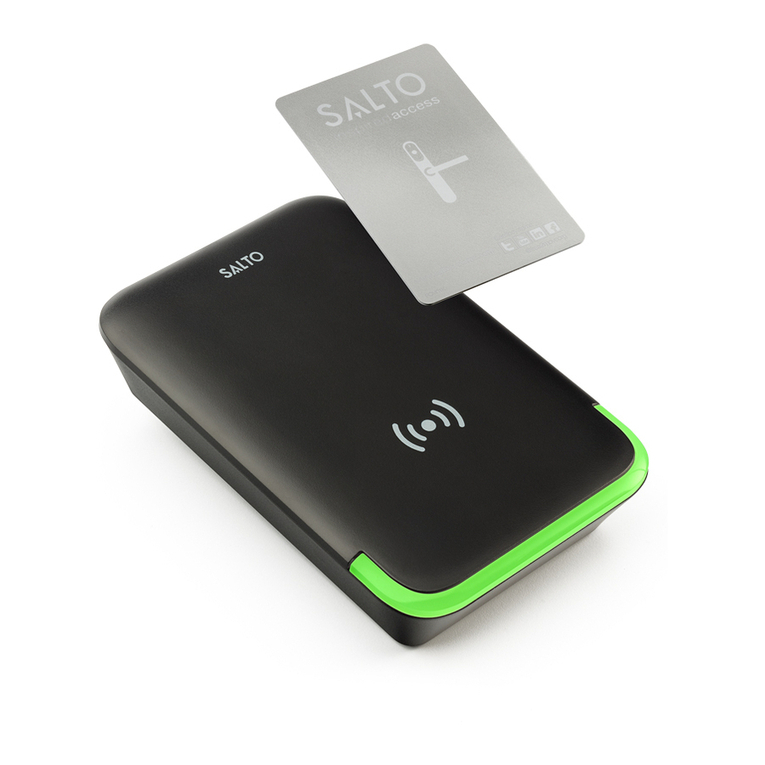Dataforth SCM9B-A1000 Series User manual

SCM9B-A1000 and SCM9B-A2000 SERIES
CONVERTER BOXES
USERS MANUAL
REVISED: 07-26-18
DATAFORTH CORPORATION
3331 EAST HEMISPHERE LOOP
TUCSON, AZ 85706
TELEPHONE: 520-741-1404
The information in this publication has been carefully checked and is
believed to be accurate; however, no responsibility is assumed for
possible inaccuracies or omissions. Applications information in this
manual is intended as suggestions for possible use of the products and
not as explicit performance in a specific application. Specifications may be
subject to change without notice.

SCM9B-A1000 & SCM9B-A2000 USERS MANUAL 2
GENERAL DESCRIPTION
The SCM9B-A1000 and SCM9B-A2000 series converter boxes convert
RS-232 communications signal levels to the correct electrical signals
required by RS-485. The RS-485 communications standard is
recommended when many DATAFORTH modules, or other addressable
devices, must be connected to a host computer over long distances. The
SCM9B-A1000 and SCM9B-A2000 converters allow communications
bus lengths up to 4,000 feet and baud rates up to 115K baud using one
twisted pair of wires.
The RS-485 communications standard is half-duplex, therefore data can
be transmitted in only one direction at a time. The SCM9B-A1000 and
SCM9B-A2000 automatically control the bus direction without external
handshaking signals from the host. Therefore, host software written for
RS-232 may be used without modification. RS-485 bus control is
completely transparent to the user.
The SCM9B-A1000 and SCM9B-A2000 can also operate as RS-485
repeaters. Repeaters are required to extend communications bus
lengths or allow more than 32 RS-485 devices to be connected to a
communications bus. A repeater simply reamplifies, or boosts, existing
RS-485 signals transmitted over long distances.
The SCM9B-A1000 converter boxes are powered by either 115Vac or
230Vac and contain an internal +24-volt 1A power supply for powering
DATAFORTH modules. The SCM9B-A1000 power supply is protected
against overloads and short circuits. The internal power supply may be
used to power accessory circuits such as relays or 4-20mA transmitters.
The SCM9B-A2000 converter boxes operate on a wide range of power
supply input voltage:+10 to +30Vdc unregulated.

3SCM9B-A1000 & SCM9B-A2000 USERS MANUAL
SPECIFICATIONS
Max Common Mode Voltage: 1500Vrms, 1 minute duration.
NRZ asynchronous data format; 1 start bit, 7 data bits, 1 parity bit and 1
stop bit.
Baud Rates: 300, 600, 1200, 2400, 4800, 9600, 19200, 38400, 57600,
115200.
Temperature Range: Operating and Storage: -25 to +70°C Ambient.
Relative Humidity: 0 - 95% Noncondensing.
SCM9B-A1000 Power Specifications
Power Requirements: 115 or 230 Vac ±10%, 50-60 Hz.
Power Consumption: 30W Full Load.
Power Supply Output: +24Vdc @ 1A.
SCM9B-A2000 Power Specifications
Power Requirements: +10 to +30Vdc unregulated.
Power Consumption (@+15Vdc): Max. Current w/RS-485 output
short,100mA.
Idle Current w/LEDs off, less than 10mA.
MECHANICAL AND DIMENSIONS
Case: Impact resistant ABS.
Weight: 2.8 lbs.(SCM9B-A1000), 1.0 lb.(SCM9B-A2000).
Dimensions: 8.08"W x 2.50"H x 6.25"D (SCM9B-A1000).
7.06"W x 1.53"H x 5.30"D (SCM9B-A2000).
RS-485 Connectors: Phoenix screw terminal barrier plug (supplied).
Replace with Phoenix MSTB 2.5/4 ST 5.08 or equivalent.
Warranty: 3 years on workmanship and materials.
CONNECTIONS
The SCM9B-A1000 and SCM9B-A2000 have three connectors located
on the rear panel, two RS-485 connectors and one RS-232 connector.
The RS-485 connectors are 4 position screw-terminal plugs labelled RS-
485 IN and RS-485 OUT. The RS-232 input connector is a female
subminiature DB-9 connector labelled RS-232 IN. The functional
description of each terminal is labelled directly above the connector on
the rear panel. The RS-485 descriptions are all preceded by letters which
correspond to the color coded wires used in standard telephone cable:
(B) Black, (R) Red, (G) Green and (Y) Yellow. All DATAFORTH hardware
using RS-485 contains this color coded nomenclature. Figures 1A & 1B
show the rear panel connections for the SCM9B-A1000 & SCM9B-
A2000.

SCM9B-A1000 & SCM9B-A2000 USERS MANUAL 4
SCM9B-A1000/2000 RS-232 DB-9 CONNECTOR
The SCM9B-A1000 and SCM9B-A2000 contain a female DB-9
connector normally used with modems or other Data Communications
Equipment (DCE). This connector should be connected to a host
computer, or controller, when converting RS-232 signals to RS-485. The
Transmit, Receive and Ground signal lines are all that is required for
proper RS-232-to-RS-485 operation. The remaining RS-232 flow control
signals Carrier Detect (CD), Data Set Ready (DSR) and Clear to Send
(CTS) are internally biased to their ACTIVE, or high, using 330 Ohm
resistors connected to +10Vdc. The RS-232 connector pinout is listed
below.
Pin # Description
1(CD) CARRIER DETECT
2(TX) TRANSMIT DATA
3(RX) RECEIVE DATA
4(NC) NO CONNECTION
5(GND) SIGNAL GROUND
6(DSR) DATA SET READY
7(NC) NO CONNECTION
8(CTS) CLEAR TO SEND
9(NC) NO CONNECTION
The RS-232 connector is left open when the SCM9B-A1000 or SCM9B-
A2000 is used as an RS-485 Repeater.
The only connections normally required for proper SCM9B-A1000
operation are pins 2, 3 and 5 of the DB-9 connector. DB-9 to DB-25
adapters can be made using the connections below.
DB-9 Pin # DB-25 Pin #
2 3
3 2
5 7
SCM9B-A1000/2000 RS-485 IN CONNECTOR
The SCM9B-A1000 and SCM9B-A2000 converters contain a four-pin
screw-terminal plug labelled RS-485 IN. This connector is considered the
HOST input when using the SCM9B-A1000 or SCM9B-A2000 as a RS-
485 repeater. An RS-485 repeater is necessary to extend the length of
an RS-485 network, or connect more than 32 RS-485 devices on an RS-
485 network.
The RS-485 IN data lines should be attached to the end of an existing
RS-485 network. The serial data received on the RS-485 IN data lines will

5SCM9B-A1000 & SCM9B-A2000 USERS MANUAL
be reamplified and retransmitted on to the RS-485 OUT connector data
lines.
This connector is left open when the SCM9B-A1000 or SCM9B-A2000 is
used as an RS-232-to-RS-485 converter.
SCM9B-A1000/2000 RS-485 OUT CONNECTOR
The SCM9B-A1000 and SCM9B-A2000 converters contain a four-pin
screw terminal plug labelled RS-485 OUT. This connector is the RS-485
output for the SCM9B-A1000 and SCM9B-A2000 when used as either a
converter or repeater.
Figure 1A Connections for SCM9B-A1000.
Figure 1B Connections for SCM9B-A2000.

SCM9B-A1000 & SCM9B-A2000 USERS MANUAL 6
BAUD RATE
The SCM9B-A1000 and SCM9B-A2000 series converters each contain a
10-position DIP switch located on the rear panel. The DIP switch is used
to select the correct communications baud rate and must be set to the
same value as the devices connected to the RS-485 OUT connector.
Only one baud rate switch may be turned on at one time.
LEDS
The SCM9B-A1000 contains three status LEDs labelled FAULT,
POWER and TRANSMIT located on the converter front panel. The
SCM9B-A2000 contains two status LEDs labelled PWR and TX located
on the converter rear panel. The status indicators are useful while
troubleshooting suspected system faults and provide visual status
indication during normal system operation.
The SCM9B-A2000 converter LEDs may be disabled internally. Low
power applications, typically powered by batteries or solar panels, can
benefit significantly by disabling the status LEDs. The SCM9B-A2000
power consumption may be reduced by up to 50% with the LEDs
disabled. To disable the status LEDs, remove the SCM9B-A2000 top
cover and locate the 3-pin strip on the PC board directly behind the
LEDs. Lift the jumper bar from the pin strip and place it over the two pins
located closest to 'LEDS OFF' written on the PC board.
The POWER (SCM9B-A1000) and PWR (SCM9B-A2000) LEDs are pilot
lights that indicate adequate power supply voltage is applied to the
converter.
The TRANSMIT (SCM9B-A1000) and TX (SCM9B-A2000) LEDs
illuminate as data is transmitted from a host computer onto the RS-485
communications bus. The illumination intensity will vary and may become
hard to detect as the baud rate increases.
The SCM9B-A1000 FAULT LED will illuminate if excessive current is
being drawn from the internal +24Vdc one amp power supply.
RS-485 TERMINATIONS
The proper termination techniques for any RS-485 system require two
biasing resistors and two termination resistors. There must be one pull-up
resistor between the DATA+ line and +5Vdc on each RS-485 network.
There should also be a pull-down resistor from the DATA- line to ground.
These two resistors are the biasing resistors and are normally positioned
at the HOST end of the cable. The RS-485 standard also requires two
resistors across the data lines for proper termination. Two 220 Ωresistors
should be placed across the data lines DATA+ and DATA-. The resistors

7SCM9B-A1000 & SCM9B-A2000 USERS MANUAL
should be placed at each end of the RS-485 cable. Please refer to Figure
2 for a typical RS-485 system application.
The SCM9B-A1000 and SCM9B-A2000 each contain the biasing and
termination resistors necessary to interface any equipment on an RS-485
network. These resistors are switch-selectable making it easier to
interface the SCM9B-A1000 and SCM9B-A2000 to other pieces of
equipment that may or may not contain the biasing and/or termination
resistors.
Figure 2. RS-485 biasing & termination resistors.
SCM9B-A1000 RS-485 TERMINATIONS
Each SCM9B-A1000 contains internal RS-485 termination and biasing
resistors for proper termination of a RS-485 system. The resistors are
enabled or disabled via two 3-position DIP switches located on the
SCM9B-A1000 rear panel. One three-position switch enables
termination resistors for the RS-485 IN (HOST) data lines and the other
switch enables termination of the RS-485 OUT data lines. The three-
positioned DIP switches are located to the left of each RS-485 connector
on the SCM9B-A1000 backpanel. The three positioned switches are
used to enable or disable a 1KΩpull-up between +5Vdc and the DATA+
line, a 1KΩpull-down resistor between the DATA- line and ground or a
220 Ωtermination resistor between the DATA+ and DATA- lines. Each

SCM9B-A1000 & SCM9B-A2000 USERS MANUAL 8
switch is labelled +1K, -1K and 220. Set the appropriate switch to the
"up" position to enable a resistor.
NOTE: The RS-485 IN +1K and -1K switches should be "up" when the
SCM9B-A1000 is used as a RS-232/RS-485 converter.
SCM9B-A2000 RS-485 TERMINATIONS
Proper biasing and termination resistors in the SCM9B-A2000 may be
enabled by using the internal jumpers contained in the SCM9B-A2000.
Figure 3 shows the location of the jumpers on the SCM9B-A2000 printed
circuit board. The jumpers are shown in the factory setting to enable a
resistor, insert a jumper into the jack position adjacent to the resistor
nomenclature written on the SCM9B-A2000 printed circuit board.
NOTE: The RS-485 IN +1K and -1K jumpers should be installed when
the SCM9B-A2000 is used as a RS-232/RS-485 converter.
FACTORY RS-485 TERMINATION SETTINGS
SCM9B-A1000: 300 BAUD, +1K, -1K on RS-485 IN & RS-485 OUT
connectors enabled, all other switches off.
SCM9B-A2000: 300 BAUD, +1K, -1K, on RS-485 IN & RS-485 OUT
enabled via internal jumpers, all other termination jumpers disabled.
Figure 3. SCM9B-A2000 jumper locations.
This manual suits for next models
1
Table of contents
Other Dataforth Media Converter manuals
